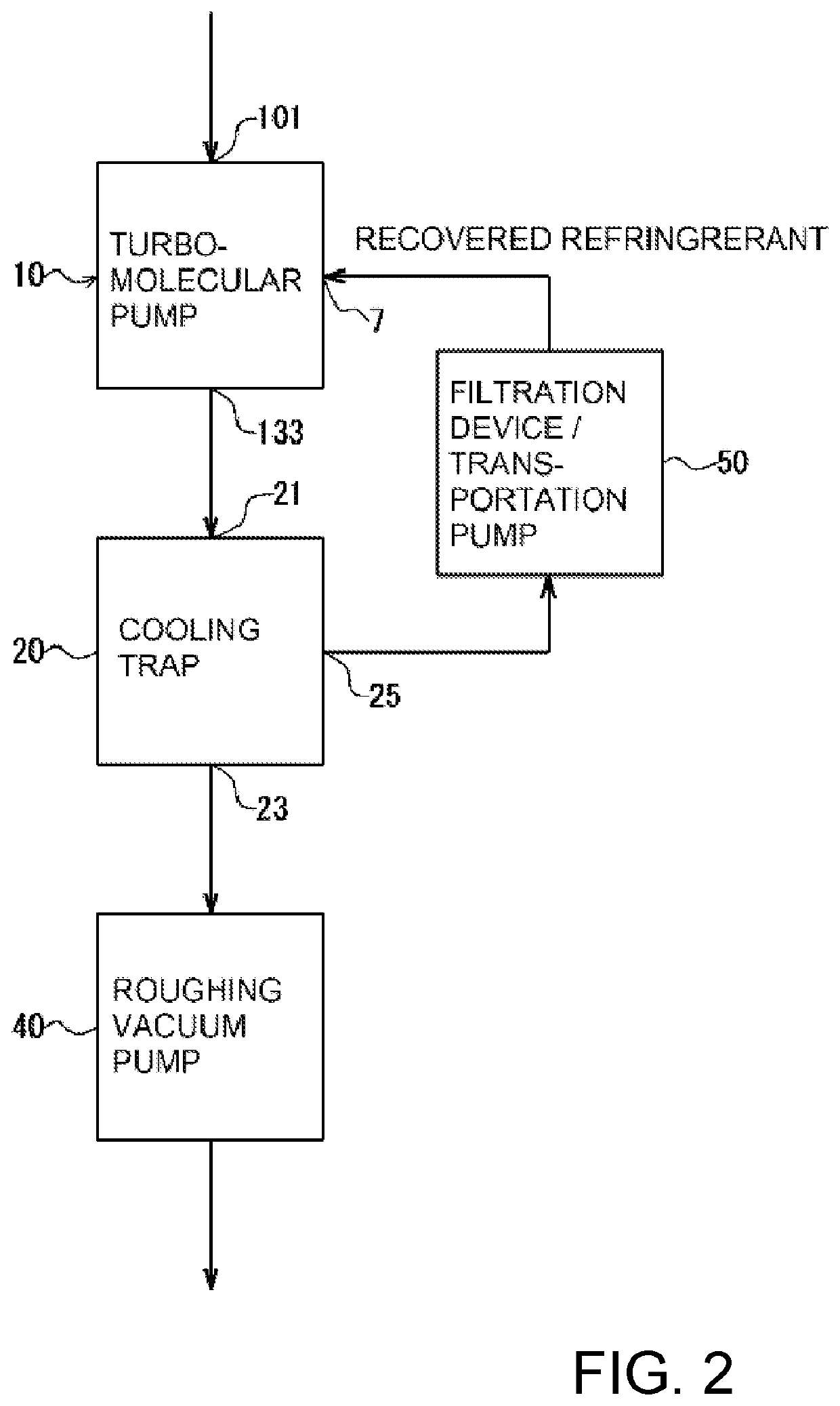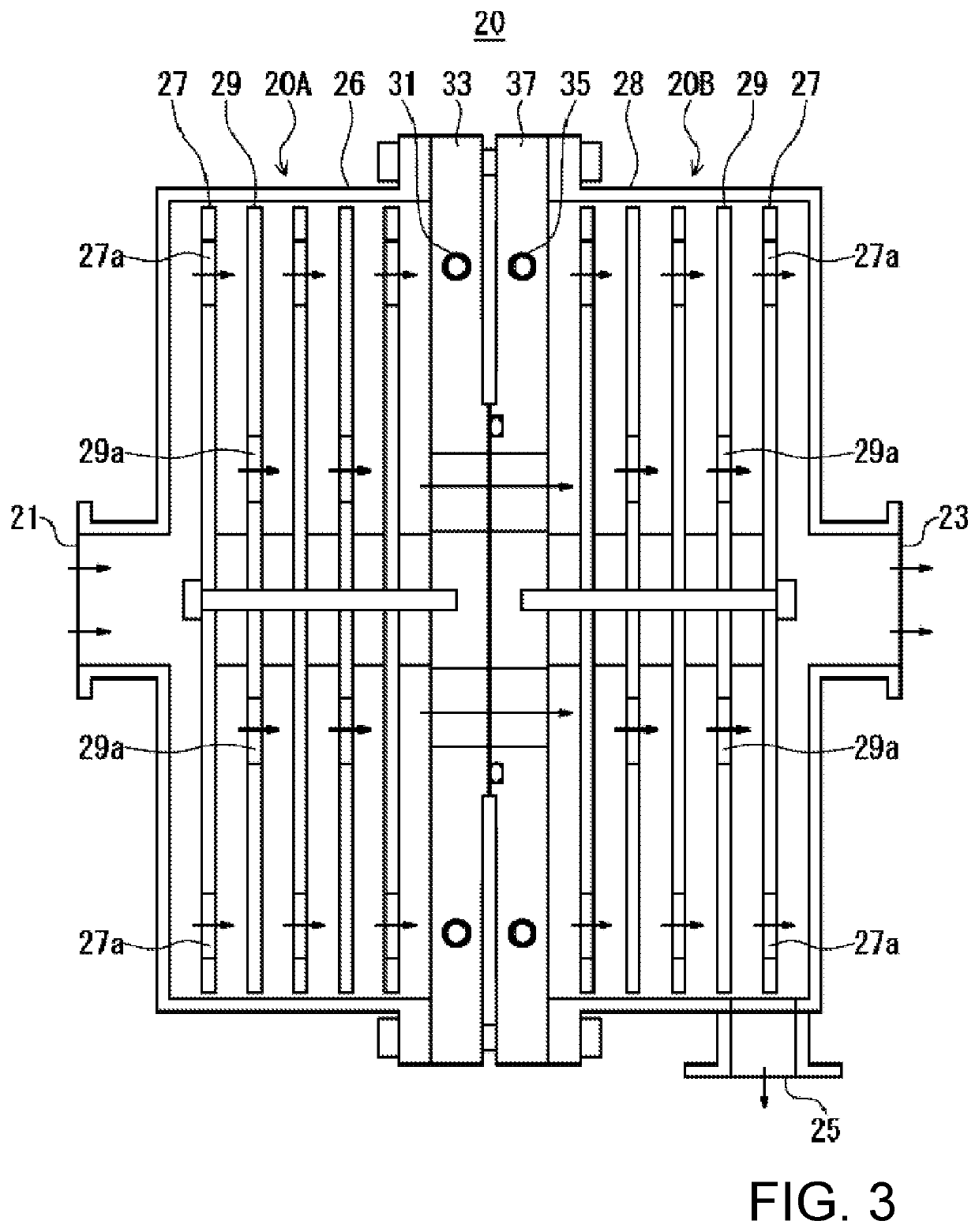Vacuum pump
- Summary
- Abstract
- Description
- Claims
- Application Information
AI Technical Summary
Benefits of technology
Problems solved by technology
Method used
Image
Examples
Embodiment Construction
[0049]Embodiments of the present invention are described hereinafter. FIG. 1 shows a configuration diagram of a turbomolecular pump, an embodiment of the present invention.
[0050]In FIG. 1, an inlet port 101 is formed at an upper end of a cylindrical outer cylinder 127 of a pump body 100 of a turbomolecular pump 10. A rotating body 103 in which a plurality of rotor blades 102a, 102b, 102c, etc. are formed radially in multiple stages on a peripheral portion of a hub 99 is provided inside the outer cylinder 127, the rotor blades being configured as turbine blades for drawing and exhausting a gas.
[0051]A rotor shaft 113 is attached to the center of the rotating body 103. The rotor shaft 113 is supported in a levitated manner in the air and has the position thereof controlled by, for example, a so-called 5-axis control magnetic bearing.
[0052]Upper radial electromagnets 104 are four electromagnets arranged in pairs along an X-axis and a Y-axis that are radial coordinate axes of the rotor ...
PUM
 Login to View More
Login to View More Abstract
Description
Claims
Application Information
 Login to View More
Login to View More - R&D
- Intellectual Property
- Life Sciences
- Materials
- Tech Scout
- Unparalleled Data Quality
- Higher Quality Content
- 60% Fewer Hallucinations
Browse by: Latest US Patents, China's latest patents, Technical Efficacy Thesaurus, Application Domain, Technology Topic, Popular Technical Reports.
© 2025 PatSnap. All rights reserved.Legal|Privacy policy|Modern Slavery Act Transparency Statement|Sitemap|About US| Contact US: help@patsnap.com



